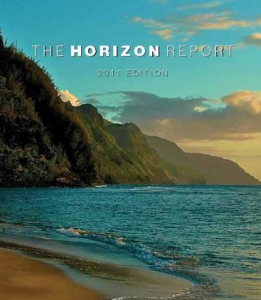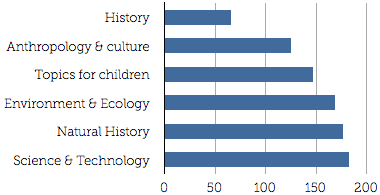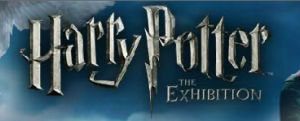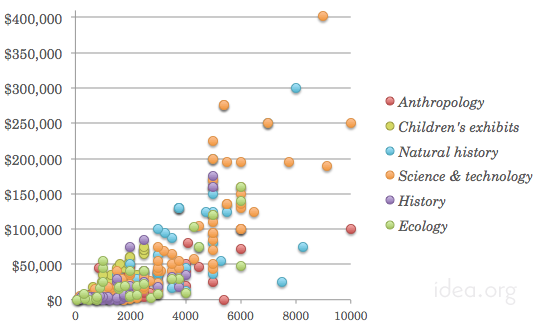There are gender wars, and then there are casualties. It wasn’t until 2011 that the behemoth toymaker LEGO acknowledged girls’ desire to build with bricks, even though the company had long before made a seemingly effortless pivot to co-branding, video games, and major motion pictures. So it’s little wonder that girls face all-too-real obstacles when […]
Read moreMonth: February 2011

Real life has a close competitor in the “Art Project,” released by Google last week. Their initial release is a clean, inviting site for browsing over one thousand artworks from 17 of the world’s most famous museums. At least one piece from each of the 17 museums is displayed in gigapixel resolution, so that online visitors can zoom in to the brushstrokes. Each piece also has information about the artists, text or video commentary, bios, and links to related pieces. Some museums have 3D walk-throughs, analogous to Google’s map street views (there are 6000 3D panoramas), and there’s a way to create personal art “collections” to revisit or share later.
 If you put information online, getting traffic is always a challenge. Web traffic may come from “organic” search results, from blogs, from Twitter & Facebook, from bookmark sites, etc. (And if you are a nonprofit, via free AdWords via a Google Grant.) There are many resources online about “search engine optimization.” But don’t confuse the approach for education with that needed for commerce. According to a search engine hacker Mark Stevens, interviewed recently by the New York Times:
If you put information online, getting traffic is always a challenge. Web traffic may come from “organic” search results, from blogs, from Twitter & Facebook, from bookmark sites, etc. (And if you are a nonprofit, via free AdWords via a Google Grant.) There are many resources online about “search engine optimization.” But don’t confuse the approach for education with that needed for commerce. According to a search engine hacker Mark Stevens, interviewed recently by the New York Times:
“I think we need to make a distinction between two different kinds of searches — informational and commercial,” he said. “If you search ‘cancer,’ that’s an informational search and on those, Google is amazing. But in commercial searches, Google’s results are really polluted. My own personal experience says that the guy with the biggest S.E.O. budget always ranks the highest.”
 Mobiles and eBooks will be a big deal in higher education by the end of the year, predicts a panel of 42 experts in education, technology, and business in a new report jointly released by a consortium and association related to higher education. These predictions are gathered in the “2011 Horizon Report,” released today.
Mobiles and eBooks will be a big deal in higher education by the end of the year, predicts a panel of 42 experts in education, technology, and business in a new report jointly released by a consortium and association related to higher education. These predictions are gathered in the “2011 Horizon Report,” released today.
Also, coming soon, these experts predict that by 2014, augmented reality and game-based learning will be important. And by 2016, they predict students will often use gestures to interact with computers, and that learning analytics will be common.
The costs to rent a traveling exhibit vary widely depending on the size, complexity, subject matter, and underlying objectives of exhibition owners.
To visualize the diversity of costs, we look at the Traveling Exhibitions Database (TED). It includes a database of 768 current traveling exhibitions available in the U.S. The following is the distribution of sizes (square feet) vs. costs ($USD) of traveling exhibits:
What kinds of traveling exhibits are there? A lot. The Traveling Exhibitions Database (TED) is a database of 768 current traveling exhibitions which are available to U.S. museums. Here’s how they are distributed by category:

 In April 2009, a dozen 53-foot tractor trailers delivered the latest blockbuster exhibit — Harry Potter: The exhibition — to the Museum of Science and Industry in Chicago. The exhibit was big on magic, with 400 costumes and props from the films, including 17 wands, Harry’s famous round glasses, the Marauder’s Map, Harry’s Nimbus 2000 broom, Hermione Granger’s Yule Ball gown, and a lot of oversized furniture. The movie props were big draw. The exhibit was at the start of its tour, and the Chicago museum was the first venue. (more…)
In April 2009, a dozen 53-foot tractor trailers delivered the latest blockbuster exhibit — Harry Potter: The exhibition — to the Museum of Science and Industry in Chicago. The exhibit was big on magic, with 400 costumes and props from the films, including 17 wands, Harry’s famous round glasses, the Marauder’s Map, Harry’s Nimbus 2000 broom, Hermione Granger’s Yule Ball gown, and a lot of oversized furniture. The movie props were big draw. The exhibit was at the start of its tour, and the Chicago museum was the first venue. (more…)
 Tina Rosenberg wrote in a blog post for the NYTimes last week, about microconsignment, which is..
Tina Rosenberg wrote in a blog post for the NYTimes last week, about microconsignment, which is..
A way for village entrepreneurs to sell innovative and important products for which there is no established market — such as solar lamps, water purifiers, stoves and reading glasses — without having to take on debt. (more…)
 Do we need yet another online version of Economics 101? Why are universities putting courseware online, and what’s in it for students and schools? Inside Higher Ed’s post by Steve Kolowich, “Online Courseware’s Existential Moment,” discusses the world of open courseware, and what the next chapter may look like. He includes a short interview with Taylor Walsh, author of Unlocking the Gate, a new book about how universities are opening up access to courses. Here are some key points and excerpts from the article:
Do we need yet another online version of Economics 101? Why are universities putting courseware online, and what’s in it for students and schools? Inside Higher Ed’s post by Steve Kolowich, “Online Courseware’s Existential Moment,” discusses the world of open courseware, and what the next chapter may look like. He includes a short interview with Taylor Walsh, author of Unlocking the Gate, a new book about how universities are opening up access to courses. Here are some key points and excerpts from the article:


